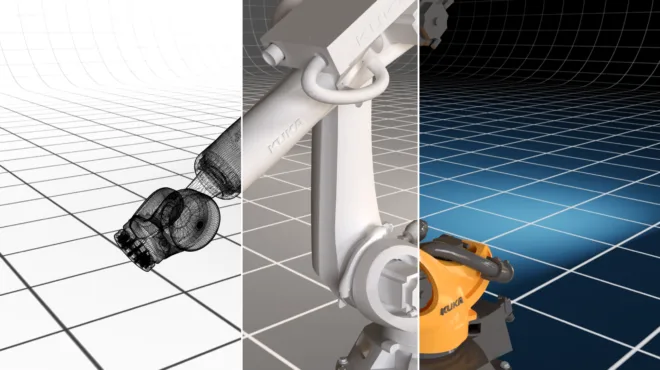Ever relied on an old GPS that didn’t know about the new highway bypass, or a sudden road closure? It might get you to your destination, but not in the most efficient or accurate way.
AI agents face a similar challenge: they often rely on static training data. This data is fixed at a point in time—while it was current when created, it can quickly become outdated. This limitation can cause problems in real-world use:
- Hallucinations: Agents might generate incorrect facts that sound believable.
- Stale Information: They can’t access the newest data or real-time updates.
- Knowledge Gaps: They may lack specific, private, or emerging information.
- Security: Data permissions may change over time, or previously available data can become confidential.
Now, imagine a GPS that updates in real time, instantly knowing about every new road, every traffic jam, and every shortcut. That’s the power of dynamic knowledge for AI agents, and it’s revolutionizing how AI can respond to our ever-changing world.
AI agents need access to dynamic knowledge
Beyond simple chatbots, AI agents are sophisticated AI systems designed to operate on their own. As NVIDIA CEO Jensen Huang described, AI agents are “information robots” that “perceive, reason, plan, and act.” They are built to understand problems, make plans, use various tools, and even understand different types of information, like text and images.
An AI agent’s core capabilities include:
- Perceiving: Understanding their surroundings and the context of a situation.
- Reasoning: Breaking down complex problems and strategizing solutions.
- Planning: Creating step-by-step actions to achieve their goals.
- Acting: Executing tasks, often by using various digital tools.
From searching internal company documents to external databases, retrieval-augmented generation (RAG) allows an AI agent to find and use dynamic knowledgeーdata that is constantly changing. Using an AI query engine, you can give your agents access to constantly changing data, both internal and external, and use reasoning to enhance agent accuracy and decision-making, helping them perform complex tasks reliably.
What’s the difference between RAG and agentic RAG?
RAG is a technique where an AI model retrieves information from a knowledge base before generating its response. This retrieval augments the generation process. Traditional RAG is like a quick lookup. The AI queries a knowledge base, retrieves information, and then generates a response.
Agentic RAG is more dynamic. Here, the AI agent actively manages how it gets information, integrating RAG into its reasoning process. It’s not just retrieving; it’s refining its queries using reasoning, turning RAG into a sophisticated tool, and managing information over time. This intelligent approach allows AI agents to adapt much better to changing situations.
Key Differences:
- Traditional RAG: Simple – query, retrieve, generate. Typically faster and less expensive.
- Agentic RAG: Dynamic – agent queries, refines, uses RAG as a tool, manages context over time. Works well for asynchronous tasks including research, summarization, and code correction.
How query engines enable continuous learning for AI agents
At the heart of this dynamic knowledge system are AI query engines. These aren’t just basic search tools—they’re powerful systems that connect AI agents to massive, diverse, and constantly updated data sources. They act as a critical bridge between an agent’s need for information and an organization’s extensive, dynamic knowledge base distributed across the organization.
AI query engines can:
- Handle Huge Amounts of Data: Ingests and organizes vast quantities of information from both private and public sources, including text, images, video, and structured data, and built to handle continuous updates.
- Retrieve Accurately: Using advanced techniques like multimodal embeddings, vector search, and reranking to find the most current and relevant knowledge.
- Enable Continuous Learning: Supporting feedback loops where the AI agent’s actions or insights can update the knowledge base, creating a cycle of continuous improvement.
- Understanding: They help agents interpret unclear natural language queries to find relevant information across different data types.
AI query engines are central to RAG. They ensure AI agents always access the freshest, most relevant information for complex decision-making, leading to improved real-time accuracy.
Designing an agentic RAG system with reasoning
This process combines the AI agent’s reasoning with the AI query engine’s data access.
The agentic RAG workflow is:
- Agent Needs Data: An AI agent identifies a task requiring current information (e.g., a real-time market analysis).
- Query Generation: The agent creates a specific query and sends it to the AI query engine.
- Dynamic Knowledge Retrieval: The AI query engine searches its constantly updated knowledge base. It extracts relevant information (text, images, audio, structured data) and prioritizes it to provide the most relevant information.
- Context Augmentation: This retrieved, current information is added to the agent’s current prompt. This creates a richer context for the LLM.
- Enhanced Decision and Action: The LLM, with this new, up-to-date context, provides a more accurate response, forms a better plan, or makes a more informed decision.
What are the benefits of RAG for AI agents?
RAG and powerful AI query engines significantly improve AI agent’s capabilities, especially when dealing with dynamic information.
- Improved Accuracy: Agents provide reliable information because their responses are based on verified, current data. Accuracy is also improved because it’s not just a one-shot query—an agent can use a reasoning model to check the relevancy of an answer, and rewrite the query, iterating until the best response is achieved.
- Real-time Relevance: Access to the very latest information means agents operate with up-to-date knowledge.
- Enhanced Contextual Understanding: A deeper grasp of queries leads to more precise and useful responses.
- Greater Adaptability: Agents can adjust strategies on the fly based on new, real-time data, making them more flexible.
- Reduced Hallucinations: Using external, verifiable data reduces the chance of generating incorrect or made-up information.
- Scalable Knowledge: Agents can tap into vast, diverse, and constantly updated data sources, expanding their operational scope.
- Multimodality: Uncover insights hidden in graphics, charts, and images using RAG to extract information.
- Enhanced Security: Using RAG to pull data from private, curated sources where access permissions can be centrally managed.
Fueling the AI agent development ecosystem
NVIDIA provides accelerated infrastructure and software tools to accelerate RAG-powered AI agents and their underlying AI query engines.
- AI-Q NVIDIA Blueprint: An open-source reference example for building secure, scalable, and high-performance AI agents that use dynamic data. It integrates various NVIDIA technologies, including Nemotron reasoning and NeMo Retriever models, and the NeMo Agent Toolkit.
- NVIDIA AI Blueprint for RAG: Included in the AI-Q blueprint, the RAG blueprint provides a recipe for creating scalable extraction and retrieval pipelines using common agent programming frameworks like LangChain, LlamaIndex, and CrewAI. It supports multimodal data, semantic search, and multilingual capabilities, designed for constantly updated knowledge sources. The RAG blueprint uses ChatNVIDIA LangChain connectors to quickly access and use NVIDIA optimized models via a standard LangChain interface.
- NVIDIA Nemotron: Built on top of popular open foundation models like Llama, Mistral, and Qwen, and NVIDIA research techniques, the NVIDIA Nemotron family of multimodal models are further optimized to deliver highest reasoning accuracies, best compute efficiencies, and open license for enterprise AI agents.
- NVIDIA NeMo Retriever: Microservices for RAG. Core components for high-accuracy data extraction, embedding, and reranking within AI query engines. These are optimized for NVIDIA GPUs, speeding up data access by up to 15x, providing 50% better accuracy, and 35x better storage efficiency.
- NVIDIA NeMo Agent Toolkit: An open-source library that simplifies building and improving systems where multiple AI agents work together. It acts as a universal connector that lets developers mix different agent frameworks, like LangChain, CrewAI, or custom code, while providing detailed performance tracking to fix bottlenecks and reduce costs.
NVIDIA also contributes at the infrastructure level with the NVIDIA AI Data Platform. This customizable reference design helps storage providers—including Dell, NetApp, IBM and VAST Data—build enterprise-grade systems for AI query engines. It uses NVIDIA accelerated computing (like Blackwell GPUs), high-performance networking (Spectrum-X), and software to ensure AI agents can quickly access and process vast datasets for real-time insights from dynamic information.
Engineering AI agents for a dynamic world
The combination of RAG, robust AI Query Engines, and sophisticated AI Agents marks a significant evolution in AI. This integration moves AI systems beyond static limitations, allowing them to:
- Access and use information from diverse, real-time sources, both private and public.
- Adapt seamlessly to constantly changing information and situations.
- Make more informed, precise, and reliable decisions based on the latest available data.
- Collaborate autonomously, learning and improving through continuous interaction with dynamic information.
While building these advanced AI agents comes with its own set of challenges, the tools and frameworks are rapidly maturing. By harnessing RAG and AI query engines to tap into dynamic knowledge, developers can build AI agents with unprecedented intelligence and autonomy across every industry.
Explore NVIDIA NeMo Retriever microservices to power your AI query engines with fast, accurate data retrieval. Connect with an NVIDIA partner for help deploying an AI Data Platform that finds the meaning in your data. Or get started building your own cutting edge AI agents and RAG systems today using the AI-Q and RAG blueprints at build.nvidia.com.
Stay up to date on NVIDIA Nemotron by subscribing to NVIDIA news and following NVIDIA AI on LinkedIn, X, Discord and YouTube.
- Visit our Nemotron developer page to get all the essentials you need to get started with the most open, smartest-per-compute reasoning model.
- Explore new open Nemotron models and datasets on Hugging Face and NIM microservices and Blueprints on build.nvidia.com.
- Tune into upcoming Nemotron livestreams and connect with the NVIDIA Developer community through the Nemotron developer forum and the Nemotron channel on Discord.
- Browse video tutorials and livestreams to get the most out of NVIDIA Nemotron.









